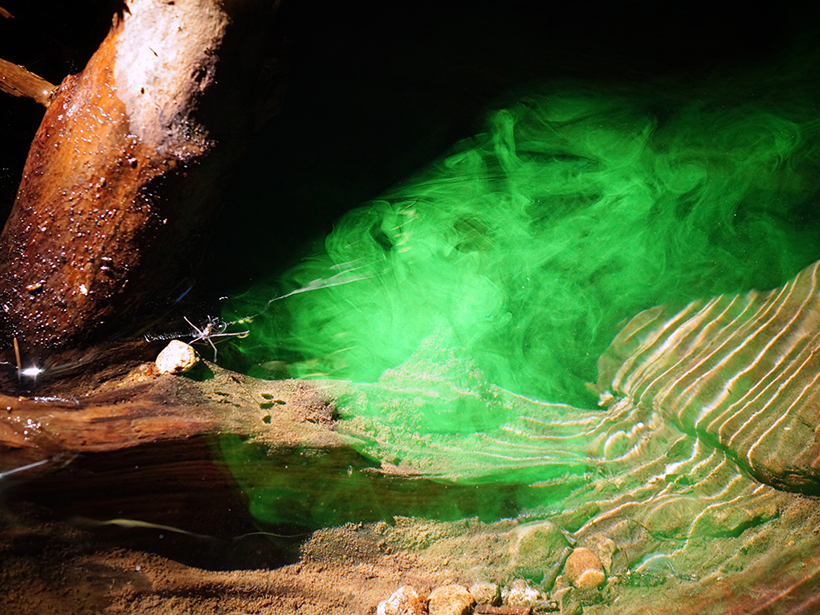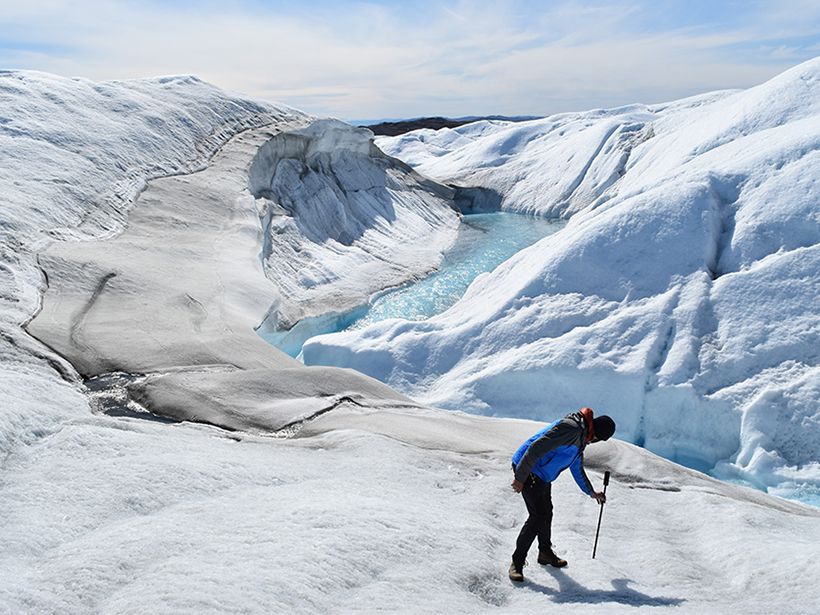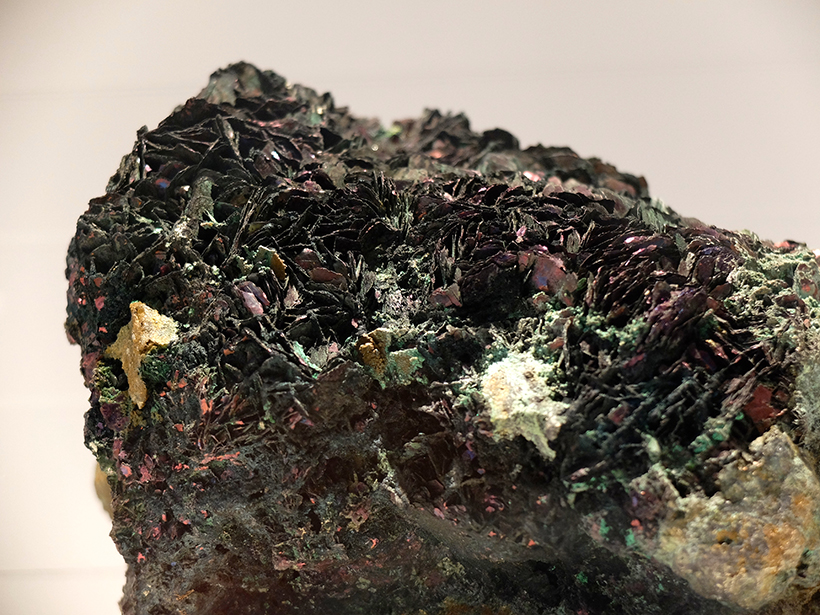When the blue dye resazurin encounters living microorganisms, it transforms into fluorescent pink resorufin and helps scientists understand ecosystem respiration, but it has its limitations.
bacteria & microbes
Mapping Ice Algal Blooms from Space
Satellite data reveal how colorful algae are melting the Greenland ice sheet.
For Some Copper Deposits, Microbes Make Minable Minerals
Copper ores were long thought to form through purely chemical processes, but a recent study provides the strongest evidence yet that microbial metabolism drives mineral production.
Baltic Bacterial Blooms Over the Millennia
Eutrophication not only is a present-day anthropogenic phenomenon in the southern Baltic but also occurred over the past few millennia, with cyanobacterial blooms during times of climate warming.
Keeping a Watch on Seaweeds: The Forests of the World’s Coasts
Planning the Implementation of a Global Long-Term Observing and Data Sharing Strategy for Macroalgal Communities; Hobart, Tasmania, Australia, 24–26 September 2018
Microbes Rain Down from Above, to the Tune of the Seasons
Every time snow or rain falls, it brings with it microbes from high in the atmosphere. Could those microbes have a seasonal signal, just like the plants on the land below?
Healing Power of Clay? Not as Off-the-Wall as You Might Think
An ancient folk remedy, blue-green iron-rich clay, kills antibiotic-resistant bacteria using a one-two punch, a new study shows.
Atacama Desert’s Unprecedented Rains Are Lethal to Microbes
Rainfall in the driest parts of Chile’s Atacama Desert in 2017 resulted in hypersaline lagoons that killed the majority of microbes adapted to millions of years of arid conditions.
Could Life Be Floating in Venus’s Clouds?
If present, microbes could explain evolving patterns in the planet’s atmosphere when observed in ultraviolet light.
Just How Anomalous Is the Vast Baltic Sea Dead Zone?
Newly drilled cores from the Baltic Sea reveal 1,500 years of deoxygenation history. The record sheds light on the dire state of the Baltic Sea today.










